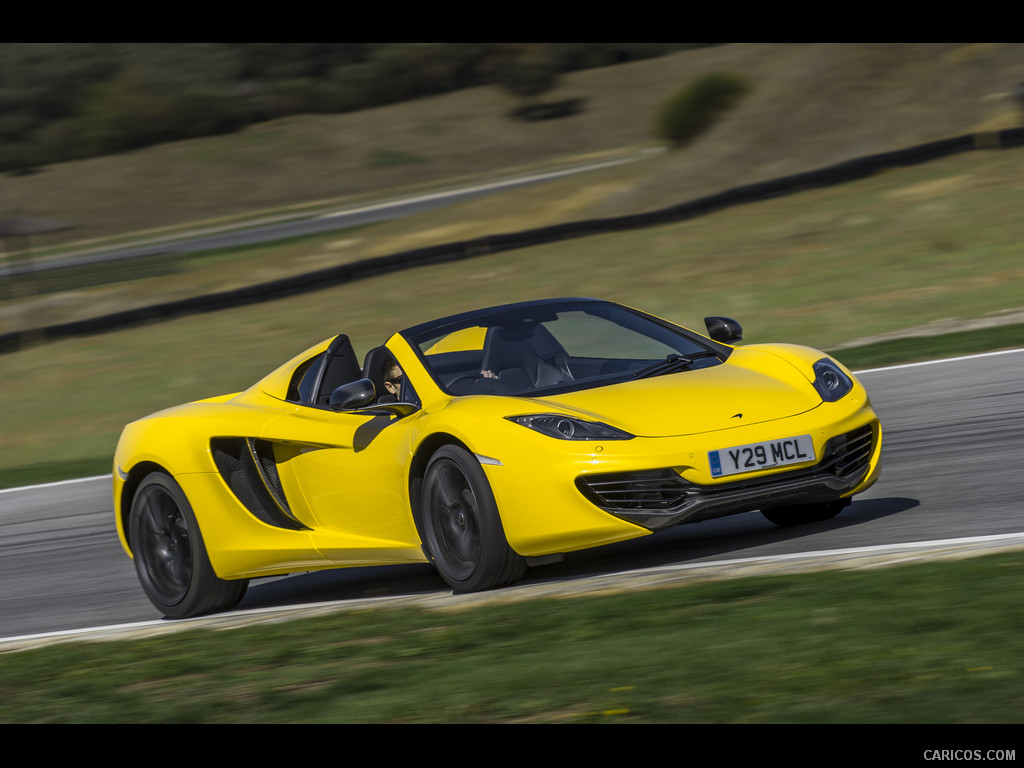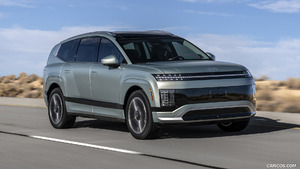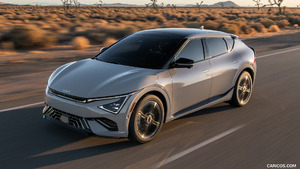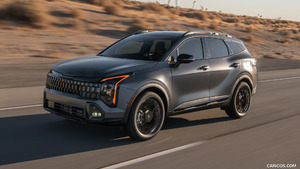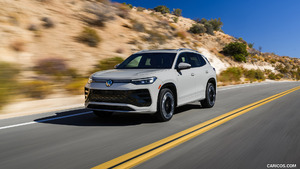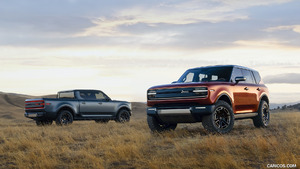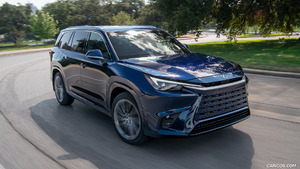McLaren MP4-12C Spider
The new McLaren 12C Spider, unveiled at the 2012 Pebble Beach weekend in California, is the second vehicle in the growing range of high performance sports cars from McLaren Automotive. This lightweight, mid-engine open-top sports car combines the astonishing performance of the 12C with the increased exhilaration of roof-down motoring. Unlike most other spiders or convertibles, the 12C Spider offers the same performance, handling and driver enjoyment as the fixed-roof coupé version.
The 12C Spider uses the industry-leading carbon fibre MonoCell as the 12C, which needs no extra strengthening to provide the necessary rigidity and strength for an open roof car. In conventional steel or aluminium chassis cars, extra strengthening – and associated weight increase – is normal during the conversion from fixed-head coupé to open-roof convertible. This can compromise performance, handling and driving enjoyment.
The composure of a sports car, the fun of a convertible ‘In the new 12C Spider you get the best of both worlds,’ says McLaren Automotive Managing Director Antony Sheriff. ‘You get all the performance and driving integrity of the 12C, plus the thrill of open-roof motoring.
‘The 12C Spider utilises all of McLaren’s Formula 1 knowledge and expertise at building lightweight driver-focused sports cars. Just like the 12C, the 12C Spider is “pure McLaren” – it is built without compromise to offer maximum driving enjoyment and performance, but with the added appeal of roof-down driving. No other sports car has this combination of abilities.’
The new 12C Spider is mechanically identical to the 12C. It uses the upgraded 625PS engine, which is part of the 12C Model Year 2013 upgrade. Acceleration – 0-62mph (100 km/h) – takes just 3.1 seconds (when fitted with Pirelli P Zero Corsa tyres), the same as the coupé. Fuel consumption and emissions also remain the same, returning 24.2 mpg (11.7 l/100km) on the combined cycle and 279g/km. The figures are much better than most high performance convertible sports cars, in keeping with McLaren’s commitment to class-leading fuel efficiency. Maximum speed is 204 mph (329 km/h).
The Retractable Hard Top (RHT) on the 12C Spider is a fully automatic two-piece design which can be raised or lowered in less than 17 seconds at speeds of up to 30 km/h (19 mph). When lowered, the roof stows beneath a body coloured hard tonneau cover which incorporates twin buttresses. With the roof raised, the area beneath the tonneau cover can be used as additional luggage space.
The 12C Spider features a heated glass rear window, which can be operated independently of the roof. With the roof down, the rear window moves automatically to an ‘aero’ position to minimise buffeting. Additionally, with the roof up, the window can be lowered to give direct access to the sound of the twin-turbo 3.8-litre V8 engine mounted directly behind the cabin.
A roll over protection system includes a steel structure within each of the rear buttresses to absorb any impact and protect occupants. An ‘active’ pop-up system was ruled out as it would have added weight.
The detail changes of the 12C Spider extend to both the audio and climate control systems. Audio output changes when the roof is open – to compensate for extra external noise – while the climate control adapts when the roof is lowered.
12C programme included Spider from the outset
‘The 12C Spider is not a converted version of the 12C,’ notes Sheriff. ‘Importantly, the two were conceived and developed at the same time, and alongside each other. The 12C programme included a coupé and convertible from the outset. The carbon fibre MonoCell chassis and all other mechanical components were designed to produce maximum performance in both configurations.
‘The 12C Spider fully subscribes to the McLaren overriding principle, that every single component should be ‘Pure McLaren’. Each constituent part was conceived, designed and produced to McLaren specification – nothing is shared from other manufacturers. The goal is to maximise driving enjoyment, performance and efficiency. Just as important, we always seek to innovate. By producing the 12C Spider with all the performance, handling and ride quality of the 12C, we have done just that.’
12C SPIDER: THE DETAILS
As with the 12C, everything on the 12C Spider was designed for a reason. There is no unnecessary ‘jewellery’, no styling fripperies. It is a ‘pure’ sports car, designed to deliver maximum driving appeal and performance, with unmatched efficiency.
‘As with all McLarens, the 12C Spider is a racing car at heart,’ notes Design Director Frank Stephenson. ‘That is not true of many – if any – other high performance convertibles.
‘It has the same timeless elegant style that distinguishes the 12C but with the added romance of open-top driving,’ adds Stephenson. ‘We have tried very hard to preserve the same design purity. With the roof in place, it looks like a coupé sports car that could just as easily be at Le Mans, as in London or Los Angeles. With the roof down, it looks like it belongs on Sunset Boulevard or the Cote d’Azur.’
Retractable Hard Top (RHT)
The Retractable Hard Top (RHT) has been designed specifically for the 12C Spider. Low weight, combined with high strength, was of paramount importance – as with all areas of the 12C.
The two roof panels and tonneau are made from the same composite material used in the construction of the 12C body. This is light, strong and allows for a very high standard of paint finish. Heated rear glass completes the roof construction.
The fully automatic mechanism raises or lowers the roof in less than 17 seconds, and can be activated at speeds up to 30 km/h (19 mph). It is controlled by a two-position switch on the centre panel within the cabin.
At the end of the roof lowering cycle, the windows fully close, and the rear glass adopts an ‘aero’ position that also reduces cabin wind buffeting. Continuing to hold the switch after the cycle is complete fully lowers the windows and rear cabin glass.
The RHT is operated by a single hydraulic pump. It is mounted as low as possible in the vehicle to optimise the centre of gravity, and improve handling.
Dual-purpose tonneau cover
When lowered, the roof stows beneath a body coloured hard tonneau cover which incorporates twin buttresses. With the roof raised, the area beneath the tonneau cover can be used as additional luggage space. This can accommodate 52 litres of luggage in two specially designed bags, supplied as standard. This is in addition to the 144 litres of luggage space provided under the bonnet.
Retractable rear glass provides increased audible drama
The rear glass can also be operated independently of the RHT. Roof up, the rear glass can be lowered to allow more engine sound into the cabin and also allows for a semi-open driving experience even in inclement weather. Roof down, the screen acts as a wind deflector, minimising disturbance in the cabin.
Roll over protection system
A roll over protection system ensures maximum occupant safety. Each rear buttress contains a steel structure to absorb the impact energy and protect both driver and passenger. An ‘active’ pop-up system would have added unnecessary weight.
Carbon fibre MonoCell ideally suited for convertible use
As with the mechanically identical 12C, the 12C Spider is a mid-engine two-seat rear-drive high performance sports car. Unlike rivals, it uses a carbon fibre monocoque chassis, the MonoCell. This confers major advantages in weight, strength and torsional rigidity – all improving handling, ride comfort and performance.
The MonoCell is a unique one-piece moulded chassis that weighs just 75kgs (165lbs). It is 25 per cent stiffer than an equivalent all-metal structure and 25 per cent lighter than a comparable aluminium chassis (the difference with a steel chassis is even greater). It is also stronger and safer in a crash, acting as a safety survival cell, as it does in a Formula 1 car.
‘It provides the perfect combination of occupant space, structural integrity and light weight,’ explains Chief Engineer Neil Patterson. ‘It is the ideal chassis to deliver groundbreaking efficiency and performance in the sports car market.’
The MonoCell is unchanged from 12C to 12C Spider, as it was originally designed for both applications. ‘This is highly unusual,’ notes Patterson. ‘Most convertibles require a strengthened chassis to reduce flex, thus adding weight – while still not achieving the structural integrity of a coupé. This flex can compromise handling precision and reduce ride comfort; while the added weight affects performance.’
The carbon fibre MonoCell not only gives advantages in strength and weight, it also improves packaging. The one-piece moulded design has been created to provide the perfect cabin – roomy, yet compact. ‘We started with the driver,’ says Design Director Frank Stephenson. ‘With the 12C and 12C Spider, the driver sits close to the centre line of the car, improving control and driver enjoyment. The pedals are positioned inboard, reducing wheel well intrusion. The result is the perfect driving environment– unique and uncompromised.’
The steering column is centred on the driver, and is parallel to his seat and shoulders. The brake and throttle pedals are both placed directly in line with the driver and all primary controls are within reach. The overall cabin architecture is both elegant in its design and uncluttered and intuitive to use.
As with the 12C, the 12C Spider has class-leading all-round visibility. ‘Enormous emphasis was put on ensuring excellent visibility, both for safety and driving precision,’ adds Stephenson.
McLaren: The carbon innovators
The carbon fibre MonoCell of the 12C and 12C Spider follows more than three decades of McLaren carbon innovation. In 1981, McLaren Racing introduced the carbon monocoque to Formula 1™. It offered an unbeatable combination of strength and weight-saving, and soon recorded the first victory for a carbon-based F1 car, at the British GP, driven by John Watson.
The legendary McLaren F1 road car, launched in 1992, was the first road car to use a carbon chassis and body. In fact, since 1981 McLaren has never built a car without a carbon chassis.
On the 12C and 12C Spider, aluminium extrusions and castings are jig welded onto front and rear structures and bolted directly to the MonoCell. Along with the carbon MonoCell, they carry the lightweight composite body panels. Apart from the roof, and the engine cover, body panels are identical to the 12C. A redesigned glass engine cover maintains an unobstructed view of the handsome twin turbo V8 engine.
‘The front and rear aluminium structures are easy to repair,’ adds Patterson. ‘They absorb impacts and can be replaced easily. Cars with full aluminium chassis use their structure to absorb and crumple on impact, causing more damage and expense to the whole structure, including the passenger cell.’
Unique Airbrake provides active aerodynamics
As with the 12C, the 12C Spider is fitted with the unique McLaren Airbrake – an ‘active’ rear wing that increases its angle to boost downforce and improve stopping power and stability through corners. ‘As with every other aspect of the car, we have “added lightness”,’ notes McLaren Automotive Chief Test Driver, Chris Goodwin. ‘Under heavy braking above 95 km/h, a piston operated by the transmission hydraulics raises the Airbrake to 32 degrees. Once this wing angle is set, and the Airbrake is pushed into the airflow, the centre of aerodynamic pressure forces the bottom of the wing up to 69 degrees. With the use of clever aerodynamics, rather than a bigger, heavier motor, the wing is deployed to its full and maximum angle. This weight-saving thinking has reduced the weight of the mechanism by 50 per cent.’
The ‘active’ aerodynamics of the McLaren Airbrake is another Formula 1™-derived innovation – although now banned, as it conferred a substantial performance advantage.
The total weight of the new 12C Spider is 1,474 kg, an increase of only 40 kg on the 12C, less than any other car in the class. The increase is because of the added weight of the Retractable Hard Top and other small changes, including a slightly heavier (by 2 kg) exhaust system. Overall, the 12C Spider is substantially lighter than most comparable convertibles, as well as being stronger and stiffer.
ENGINE AND TRANSMISSION
The light weight philosophy does not begin and end with the body and chassis of the 12C Spider. A light structure enables the designers to save weight through the whole design process. This includes the unique 3.8-litre twin turbo V8 engine, which weighs just 199 kg (439lbs).
Designed by McLaren Automotive, the British-made M838T engine features dry sump lubrication and a flat plane crankshaft, both of which have helped engineers place the engine extremely low in the chassis, lowering the centre of gravity and optimising handling and agility.
‘The engine in the 12C and 12C Spider offers low weight, low-rev tractability, potent mid-range performance and extensive high-rev reach,’ says Richard Farquhar, Function Group Manager for Powertrain. ‘It also has a level of refinement and efficiency you wouldn’t normally expect from a V8.’
Power boost for 2013
The 12C Spider, along with the Model Year 2013 12C, gets the latest and more powerful 625PS (616hp) version of the engine, to give even more vivid acceleration with no loss of efficiency. Fuel economy has not been affected: it is still 24.2 mpg (combined) with emissions of just 279 g/km – excellent figures for so powerful a vehicle.
Revisions have also been made to the innovative Intake Sound Generator (ISG). This system works by controlling engine intake noise within the cabin at differing levels, depending on the Powertrain mode selected for the car. Moving up through Normal, Sport and Track Powertrain modes enhances the aural drama and driving experience of the 12C, allowing more of the natural sound of the V8 engine noise to enter the cabin. This allows the 12C Spider to be dramatic and exciting when required, but then also quieter for long distance journeys. With the 2013 specification 12C and 12C Spider, the driver can select the level of engine noise delivered in each mode through an electronic menu, accessible via the instrument cluster.
The exhaust system is the only part of the engine that has been changed for the 12C Spider. To ensure the audible experience is optimised for open-top driving, the exhaust has been developed to suit the harmonics of the 12C Spider body shape. An optional sports exhaust system is available, which is both lighter and louder than the standard equipment.
The seven-speed dual clutch ‘SSG’ transmission used in the 12C Spider is unchanged from that used in the 12C. It utilizes the Model Year 2013 upgrades, including crisper throttle response and improved clutch control. Gear changes are now faster and smoother. Like the 12C, it is available in Normal, Sport and Track gearshift modes providing progressively faster shifts, and differing shift points when in automatic mode. These modes are selected using the ‘Powertrain’ dial on the Active Dynamics Panel.
SUSPENSION
The goal with the 12C and 12C Spider was to offer executive car-like ride quality and sharp, agile handling. This is a combination of abilities that has never been seen on high-performance convertibles before.
Convertibles – especially fast convertibles – tend to have compromised ride and handling and often use different suspension settings than their fixed-head counterparts. The 12C Spider is a revelation. The exceptional strength and rigidity provided by the carbon fibre MonoCell means that the 12C Spider is able to retain exactly the same suspension components and settings as the groundbreaking 12C.
ProActive Chassis Control makes anti-roll bars redundant
The 12C Spider uses the same ProActive Chassis Control that proved such a revelation with the 12C. The suspension is based on double wishbones with coil springs, like a Formula 1™ car. Innovative adaptive dampers, interconnected hydraulically and linked to a gas-filled accumulator, provide pro-active responses, depending on road conditions and driver preferences. Normal, Sport and Track settings are available which operate independently of the transmission settings.
One of the advantages of ProActive Chassis Control is that it makes traditional metal anti-roll bars unnecessary. Notes Paul Burnham, McLaren Automotive Vehicle Dynamics Manager: ‘An anti-roll bar is a popular and simple solution to reducing a car’s roll. But the problem is that its stiffness is always there, reducing ride suppleness and comfort. The ProActive Chassis Control system, with its interconnected adaptive dampers, takes care of body roll without the need to use separate metal anti-roll bars. It is a large factor in our goal to offer the best high performance sports car handling and yet also offer executive car ride suppleness.’
Electronic sensors monitor the movement of the body and the wheels, increasing the levels of damping as and when required.
Brake Steer is another important technology that helps to boost the agility of the 12C Spider. It is yet another Formula 1™ technology that McLaren uses on the 12C. However, unlike many of those technologies, Brake Steer is now banned in Formula 1™ because it offered a clear performance advantage. This was shown by the successful implementation in 1997 on McLaren’s 1997 Formula 1™ car.
The Brake Steer system offers the same benefits as a ‘torque vectoring’ differential, but is up to 20 kg lighter – part of the ‘weight down’ philosophy used on the 12C and 12C Spider. The system uses the hardware of the 12C’s existing Electronic Stability Control (ESC) to apply braking forces to the inside rear wheel, improving turn-in to corners, boosting cornering speed, agility and driver confidence.
Standard brakes – forged aluminium bell and cast iron ventilated and cross-drilled discs – are optimised for weight, saving around 8 kg from standard cast iron. Optional Ceramic Composite Matrix (CCM) brake discs are also available saving a further 3.7 kg.
INTERIOR
The 12C Spider cabin design is identical to the 12C, offering a range of material and colour options allowing customers a great degree of freedom to personalise their car. This includes the, new for Model Year 2013, Semi-Aniline leather sport interior, which features a more naturally textured finish. The interior of the RHT roof panels are lined either in Carbon Black Fabric or optional Carbon Black Alcantara.
Audio and climate systems specially calibrated for the 12C Spider
Typical of McLaren attention to detail, the climate control and audio systems have been totally recalibrated, to compensate for top-down driving.
The audio system, developed specifically for the 12C Spider by Meridian, the bespoke British hi-fi specialists, optimises the music output depending whether the car is running with the top up or down. Meridian was involved in the audio system’s development from the very outset of the car’s design, to optimise audio quality.
The Automatic Volume Control (AVC) and Automatic Tone Control (ATC) are both recalibrated for the 12C Spider. Individual speakers are automatically adjusted to take into account increases in external sound.
The climate control system is also recalibrated to automatically adjust when the roof is lowered. Airflow to the windscreen is reduced and, instead, redirected to the lower cabin vents. Fan speed also responds to vehicle speed, to maintain the desired temperature.
When the roof is up, the climate control settings from the 12C are applied. However, even when the rear cabin glass is lowered – which can be done independently of the roof – the climate control system is automatically adjusted to ensure constant cabin temperature and occupant comfort.
MANUFACTURING:
The 12C Spider is built at the new £40 million McLaren Production Centre (MPC) facility in Woking, Surrey, adjacent to the McLaren Technology Centre (MTC). The manufacturing facility was opened in November 2011 by UK Prime Minister David Cameron and McLaren Group Chairman Ron Dennis.
By the middle of this decade, McLaren Automotive will be producing a range of premium carbon-based high performance, highly efficient sports cars.
P ZERO TECHNOLOGY DELIVERS POWER AND CONTROL
As McLaren’s sole tyre supplier and technical partner, Pirelli has developed bespoke versions of the P Zero and P Zero Corsa for the new 12C Spider for road and track use.
The P Zero tyres for McLaren are the result of close collaboration between Pirelli’s researchers and McLaren’s engineers at Woking, with the dual objective of harnessing all the power of the new car while ensuring total control. At the heart of the project is the complete integration of the tyre design with the 12C’s construction architecture and the sophisticated electronic technology in order to make the P Zero tyres a fundamental component of the car.
The perfect harmony between car and tyre guarantees driving pleasure and precision, an immediate response under a variety of different forces and an instant reaction to changes in aerodynamic loads and set-up, no matter what the conditions of usage.
Thanks to the experience gained by Pirelli in Formula 1™ as well as other high-profile motorsport championships, Pirelli’s engineers developed tyres in record time that are capable of meeting the needs of three distinctive characteristics that define the 12C and 12C Spider:
- A high power output, generated by the twin-turbo engine, which requires a tyre capable of laying the torque down in a progressive and consistent way.
- A high-performance suspension system developed along with that type of tyres. Once more, the experience gained in Formula 1™ was essential, as in grand prix cars the tyres form a vital part of the suspension. In exactly the same way, the suspension settings of the 12C and 12C Spider have been based precisely on the characteristics of the P Zero and P Zero Corsa.
- A high power-to-weight ratio, plus varying aerodynamic downforce loads, which require a tyre that can generate maximum grip and traction under any circumstances.
Pirelli’s development work with the bespoke McLaren tyres concentrated on both the structure and compound. The objective for the tyre structure was to ensure flexibility and grip, while at the same time guaranteeing enough rigidity to cope with high aerodynamic loads. In order to be sure of this versatility, the structure of the front and rear tyres have been developed individually to respond to the different demands placed on them. For this reason the front tyres have a rounded profile while the rears are squarer.
The work carried out on the construction obviously has an important effect on the compounds, which have been designed to warm-up quickly and complement the whole tyre’s rapid reaction to direction changes, while providing consistently high levels of grip.
The nanotechnology used by Pirelli in the design of these tyres allowed the Italian firm to develop ‘intelligent compounds’, which react instantly to adapt themselves to the varying forces acting on the car at any given time.
These compounds make full use of the most advanced Pirelli’s technology during their production, to ensure complete precision in the compound mix.
Pirelli’s engineers also made use of cutting-edge virtual modelling technology while developing the P Zero and P Zero Corsa for McLaren, in order to collect data and simulate the different usage and stress levels that the tyres are subjected to under different circumstances.
THE PIRELLI P ZERO FAMILY
The specialised P Zero and P Zero Corsa tyres developed for the 12C and 12C Spider are based on the standard P Zero and P Zero Corsa models: Pirelli’s range-topping Ultra High Performance tyres.
Launched in 2007, P Zero is Pirelli’s iconic Ultra High Performance tyre. High safety standards and reduced braking distances, together with enhanced roadholding and perfect comfort, are the tyre’s defining characteristics. Special nano-composites in the compounds and bead ensure a comfortable drive allied with sporting performance. The three wide longitudinal grooves on the tread pattern guarantee maximum grip in the wet and reduced noise levels. The structure guards against any deformation in the tyre even at speeds of up to 370kph.
P Zero Corsa System is the most sporting product in Pirelli’s range, suitable for use on the road and on the race circuit as well. It provides maximum performance and perfect safety both in the wet and in the dry, thanks to its directional precision and roadholding through corners. The tyre’s original development began in 2003: seven years later Pirelli launched the P Zero Corsa System, which combined the P Zero Corsa asymmetric tyre with an evolution of the preceding directional tyre. These two different tread patterns – directional on the front and asymmetric on the back – help to delay the onset of aquaplaning even in extreme conditions.
Technical Specification
| Drivetrain layout | Longitudinal mid-engine, RWD |
| Engine configuration | V8 twin turbo |
| Engine material | Aluminium block and cylinder heads |
| Oiling | Dry sump |
| Compression ratio | 8.7:1 |
| Valvetrain | 32-valve, DOHC, dual VVT |
| Redline ( rpm) | 8,500 |
| Bore x Stroke (mm) | 93 x 69.9 |
| Engine displacement (cc) | 3799 |
| PS / rpm | 625 / 7500 |
| Torque Nm / rpm | 600 / 3000-7000 |
| PS per litre | 164 |
| Transmission | 7 Speed SSG |
| Body structure | Carbon fibre MonoCell with aluminum front and rear frames |
| Wheelbase (mm) | 2670 |
| Track, F/R (mm) | 1656 / 1583 |
| Length (mm) | 4509 |
| Width (mm) @ widest point | 2093 |
| Height (mm) | 1203 |
| DIN weight (kg / lbs) | 1474 / 3249 |
| Dry weight (kg / lbs) | 1376 / 3033 |
| Dry weight with lightweight options (kg / lbs) | 1341 / 2956 |
| Weight distribution at DIN F / R % | 42 / 58 |
| Active aerodynamics | McLaren Airbrake |
| Suspension | ProActive Chassis Control |
| ProActive Chassis Control modes | Winter / Normal / Sport / Track |
| Powertrain modes | Winter / Normal / Sport / Track |
| Brakes | Cast iron discs with forged aluminum hubs (F 370mm / R 350 mm) |
| Wheel sizes (F / R) | 19” x 8.5”J / 20” x 11” J |
| Tyres (F / R) | Pirelli PZero 235/35 R19 / 305/30 R20 |
